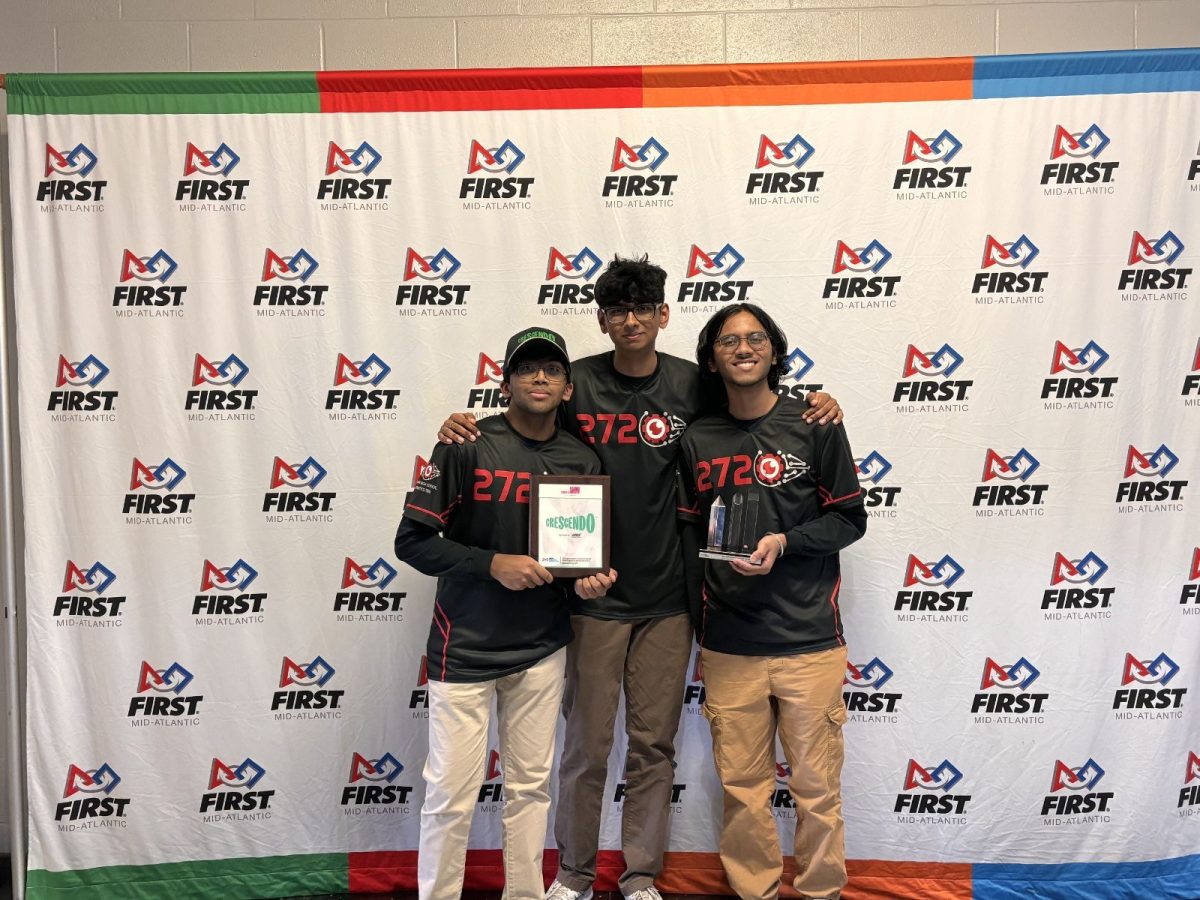Robotics Season Recap
Red Watch’s season has officially come to an end. Red Watch Robotics is Lenape’s robotics team, and they compete in FRC (First Robotics Competition) hosted by FIRST®. In this article, we will go over how our team improved compared to last year, performed in competition, innovative projects that we included on our bot, and how we positively affected our community.
Positive Changes
Red Watch’s biggest change this past season was the shift to a more efficient drivetrain. Contrary to last year’s season, this year brought with it the introduction of a swerve drivetrain. Drivetrain is the collective name for all of the components in a vehicle that results in its wheels having power. Last year’s robot used a tank drivetrain, which creates a driving motion similar to a tank’s, by having each wheel linked and moving together. This year was the first year we implemented swerve drive instead. A swerve drivetrain allows every wheel to spin and rotate at the same time, resulting in the robot moving in any direction at every angle smoothly. This change was not only risky and expensive, but it was also worth it. Being able to maneuver our robot at such angles greatly helped us navigate throughout the field and past other robots.
Additionally, our woodshop crew built an entire working mock field for us in just a few weeks. Except for one person, all team members were brand new, making this their first year working on field-element creation. Despite being novices, they quickly learned the process together and developed an efficient assembly system.
Competition Season
This year was one of Red Watch’s better competition years, if not the best. In our first competition at Seneca, we placed 2nd. We were drafted by our sister team Cherokee Charge on Alliance 4 and found high success with them and Pathera. Not only did we make it to the finals, but we also won the Quality Award because of our modular design. In our second competition at Bensalem, we didn’t have as much success as we did at Seneca. We were an alliance captain (of Alliance 8) but we didn’t last long in playoffs and faced malfunctioning and inconsistency issues. Despite those issues, we still won an award. That award was the Innovation in Control Award for our unique use of controls and electrical components. After our first 2 competitions, we ranked 27th in the Mid-Atlantic District, meaning we would qualify for the Mid-Atlantic District Championship. At the Mid-Atlantic District Championship, we played generally mediocre. Our highs were very good but our lows were very upsetting. This happened throughout the season, but our inconsistency was primarily shown in this competition. At the end of qualification matches, we ranked 28th out of 62. Unfortunately, we weren’t picked for an alliance and went home hungry for victory, having failed to pass on to the next round of competition, WORLDS.
Innovative Projects
This year came with many new innovations alongside all of the changes we made. For example, we were able to get a great quality path planner working this year. Path planning lets the robot find the shortest path to a destination, in the context of the field. We were also able to get its pre-programmed paths – referred to as auto paths – to a good quality. Additionally, for the first time, we were able to run game piece detection utilizing our robot’s limelight. We were also capable of doing it with custom code on a Raspberry Pi.
How We Positively Affected Our Community
We hosted several community events before, after, and throughout the season, one of which was particularly popular among local Girl Scout troops. During this event, we demonstrated how our team operates and showed our robot in action, providing the girls with hands-on experience using some of our tools. They learned how to CAD with TinkerCad, saw laser cutters in action and had flowers laser cut for them, explored how circuits work with Makey Makey kits, and much more. Based on their enthusiastic responses, it’s clear we positively influenced their view of STEM, and perhaps even sparked an interest in pursuing robotics someday.
Another event we organized was the Roadside Cleanup with Cherokee Charge, where we collected trash from local roadsides and ensured its proper disposal. Also, at the start of several meetings this postseason, we spent the first ten minutes helping to dispose of trash scattered around the courtyard.
Other projects that positively influenced our community were our crayon project and recycled 3D Printer Filament project. In the crayon project, we melted down crayons and created new crayons for people who don’t have fine motor skills. For our recycled 3D Printer Filament project, we collected any extra used filament and recycled it into pins we gave to the community.
Conclusion
Thank you to all of our sponsors, supporters, and dedicated mentors. This amazing season couldn’t have happened without you guys. We are still hungry and ready to come back better than before to achieve our dream of making Worlds.


